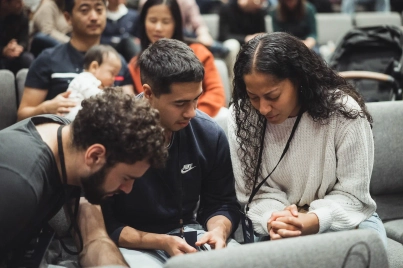Here’ what you missed in the previous two posts:
- That one of the roadblocks planters often face is that the traditional understanding of pastor doesn’t always work within a growing church. And this causes internal & external conflict (the heart, the pews and the bleachers) for many planters, putting up unnecessary roadblocks.
- That this internal & external conflict isn’t biblical. That the descriptions used for pastoral leadership (shepherd, elder, overseer) provide us with the scope for how we need to see and understand our role, over and above what the traditional interpretation may be in our context.
It took a while to get there…but this is a real, live issue, so here’ the 5 areas that as planters (and coaches of planters) we wanting to push these truths down into.
First, get the mission
This is a no-brainer, but if there’ no clarity about the mission of the church, the rest is going to be about as much use as knitted light bulb. If we’e not convinced that the church is on a mission to be matured in Christ and to call others into that fellowship, then no matter what role we play in the church, we’e starting from the wrong spot.
It’ when we forget this that we start thinking the mission is to placate the saints rather than saving the lost. Or alternatively, to believe that merely because numerical growth is happening, things are on track – mission is measured by numbers rather than by the number of lost saved.
If planters are going to do pastoral leadership well, they need to have such clarity and conviction about their mission that no matter whether they’e paid or not, have authority or not, it’ this truth that shapes how they see and interpret what’ happening around then, and informs how and where they expend their time and energy.
Second, acknowledge your role
Once we’ve got clarity on what the mission of the church is, we can then ask that all important question: as the leader of God’ church here…what’ my role?
So if we’ve got clarity on our mission, the question then becomes, what is it going to look like for me to mature and mobilise God’ people for mission? It’ this question that shapes everything we do: How will I spend my days? What will my diary reflect? What are my priorities now? What will need to change to get us from here to where we need to be? Who will I meet with…and who won’t I meet with?
These aren’t easy questions, but for those who are planting, and particularly for churches that are growing, they are questions that need to be asked and examined regularly as different seasons and challenges are encountered within the church. If our definition of the role does not cope with growth…then we are in the inhibitor to growth. We need to get clarity on our role so that either through a passive, unbiblical or inflexible understanding of what our role within the church is.
Third, communicate that role
It’ not good enough for us to understand our role though…we need to take those we lead along that journey as well. Everyone in the church comes with their own baggage as to what the leader should be doing. So until we understand what our role as planters / pastors is, we’e not going to be able to help them think through that, and we’ll either be crushed under the weight of their expectations or their disappointment…or we’ll just shut up shop and enjoy the cult-like atmosphere of stagnation.
We want to communicate our role. Not to prop-up our own importance, but to further the mission. And this is particularly important for leaders as churches transition through growth barriers, and the relational distance of the pastor becomes greater to those who had access to them before, and the community experiences the changing dynamics of growth.
We need to learn to love seeing ministry happen more than we love doing the things that we might love in ministry. And we need to help others see this – that while we love one-to-one bible reading and pastoral visits, if we are to pursue the mission of the church our role is (amongst other things) to mobilise others to these things. It’ not good enough for us to understand our role…we must paint that picture for those we lead in light of the mission we pursue.
Fourth, understand that it’ll change in different seasons…and that’ ok
One of the clear implications of this is that we need to grapple with the truth that our role will look different at different stages of growth, and require different skills and focuses in different seasons of planting and re-planting.
And if we have a more robust view of our role in pastoral leadership, then we will more easily adapt and transition between these stages. We will equally see the networking and gathering of a launch team, the imparting of vision and equipping for mission in the launch phase, the structural and administrative aspects of working through the 80-100 barrier, the vision-casting and leadership development required of moving towards a multi-site church – ALL as equal expressions of our role as shepherd, elder and overseer. One not less than another, but each the expression of the same biblical role to see God’ people matured and mobilised towards mission.
Fifth, always bring it back to the Word
I finish with this, because we’e going to make mistakes in this. We’e not CEO’ and we’e not running a business…even while there are aspects of pastoral leadership that look similar. But we are led and shaped by God’ Word. And at every stage, at every place in our leadership, at every barrier, roadblock or setback that we might encounter, what we want to come back to – and seen by all to be coming back to – is God’ Word.
When we start meetings, when we ask for direction, when we speak of vision and mission, when we mourn at loss, when we admit mistakes…in all of the situations a planter and pastor will find themselves in, it is God’ Word that we want to begin and end with.


